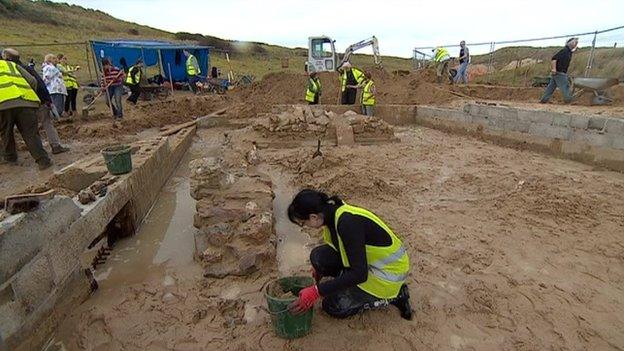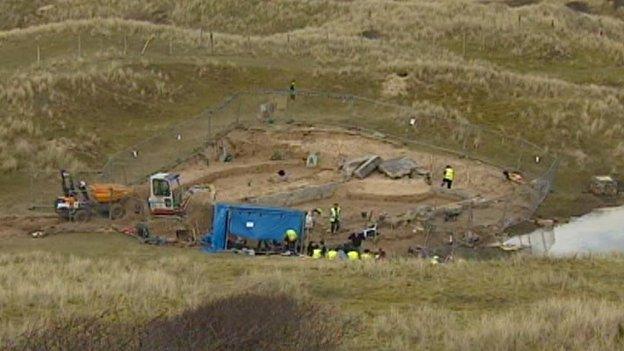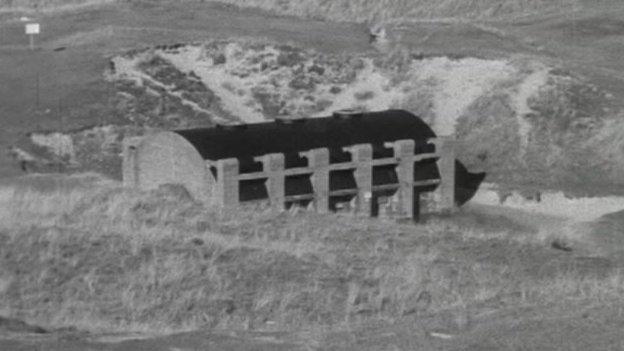St Piran's Oratory excavation begins in Cornwall
- Published

Tonnes of sand are being removed from the oratory site

After the dig, a plan will be created to try and ensure the oratory's conservation
Work to uncover an ancient church dedicated to the patron saint of tin miners is under way in Cornwall.
The 6th Century remains of St Piran's Oratory - buried at Penhale Sands, near Perranporth - are believed to be among the oldest places of Christian worship in Britain.
According to legend, St Piran was born in Ireland in the 6th Century but spent most of his life in Perranporth.
After the dig, a plan will be created to try and ensure its conservation.
Engulfed by sand in the Middle Ages, the remains of the oratory were first discovered in the late 18th Century.
There were then two major digs in 1835 and 1843 before the remains were encased in a large concrete structure in 1910 after a number of skeletons - including one of a large headless man - were found.
The structure was removed in 1980 and the delicate site buried in sand - for its own protection - those involved in the excavation said at the time.
The new excavation comes after a 14-year campaign for the ruins to be unearthed again.
The St Piran Trust said the oratory was buried in 1980 to protect its fabric because, at the time, there was no public commitment to protect and make it accessible.
It said it would ensure that, once uncovered, it would be protected and properly managed.
Archaeologists from Cornwall Council and up to 30 volunteers a day are helping clear hundreds of tonnes of sand by hand.
After the dig, the building will be temporarily covered to determine a plan for its long-term conservation.
Each year, St Piran's story is retold in a drama on the dunes near the oratory on the Sunday nearest to 5 March.

The oratory's remains were encased in a large concrete structure between 1910 and 1980
- Published7 August 2013
- Published6 March 2012
- Published1 March 2011